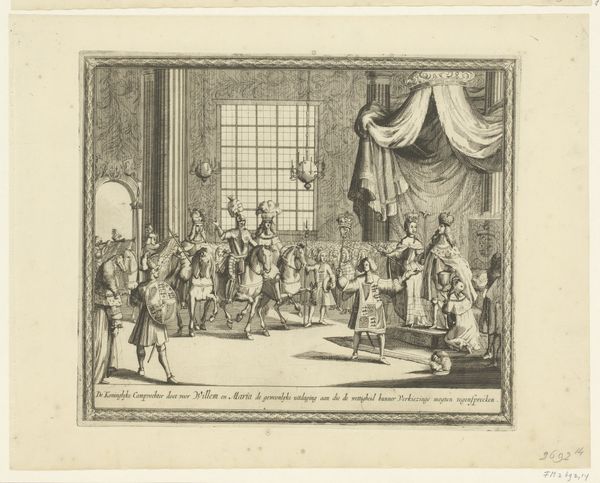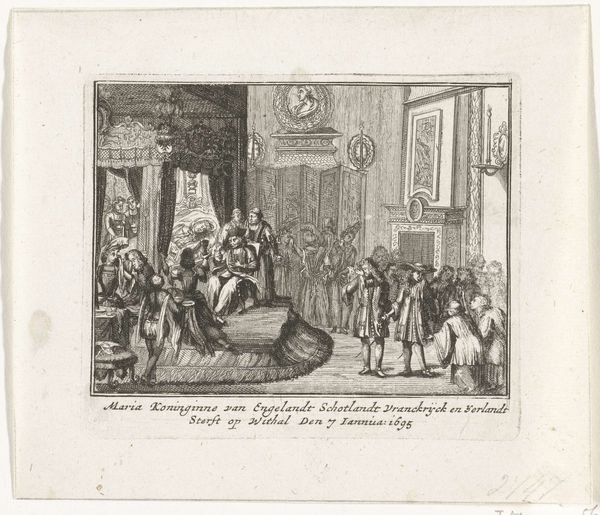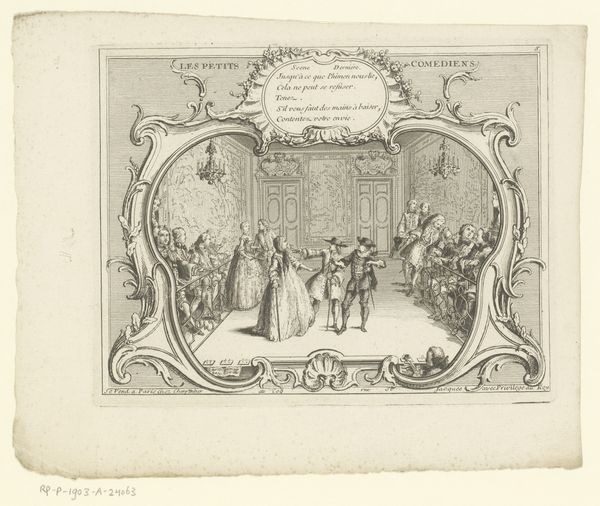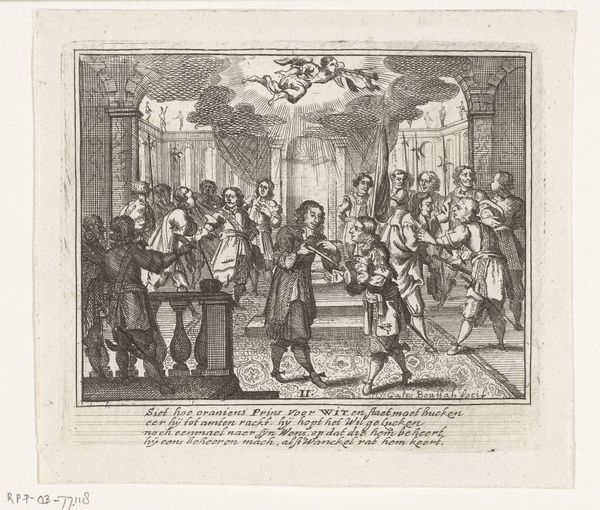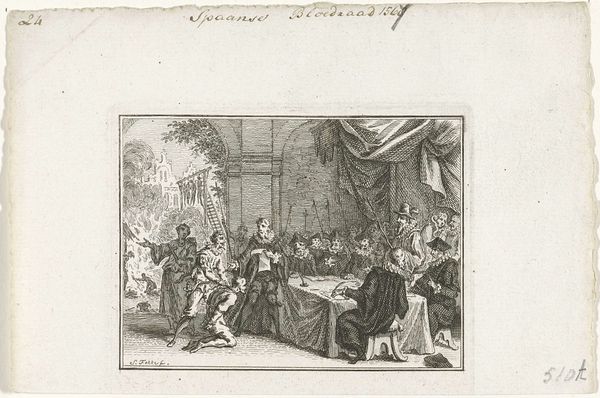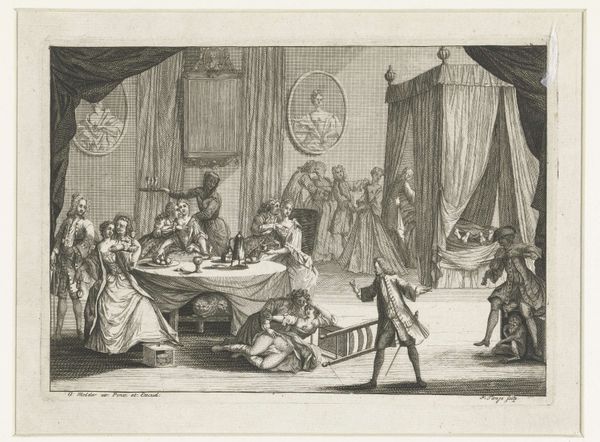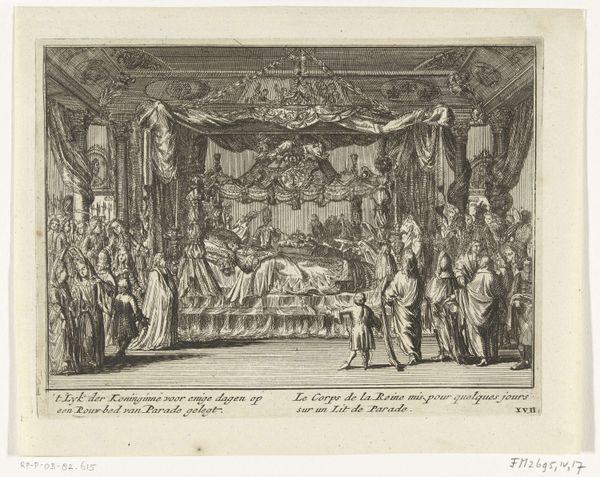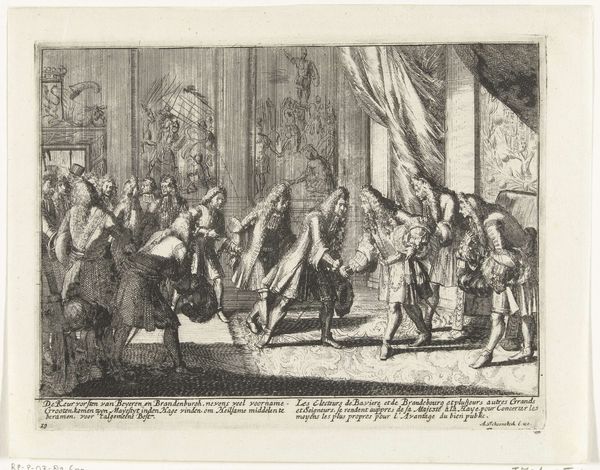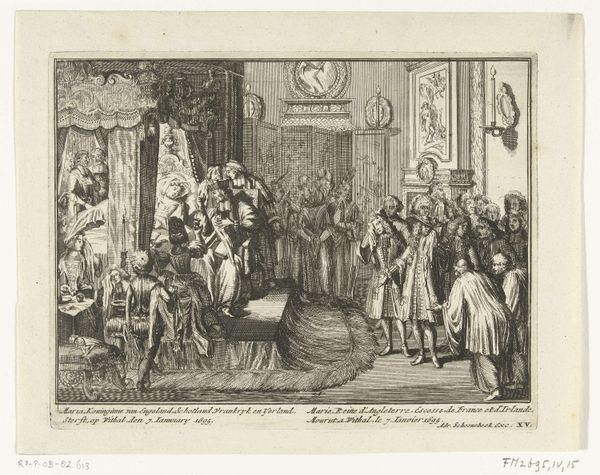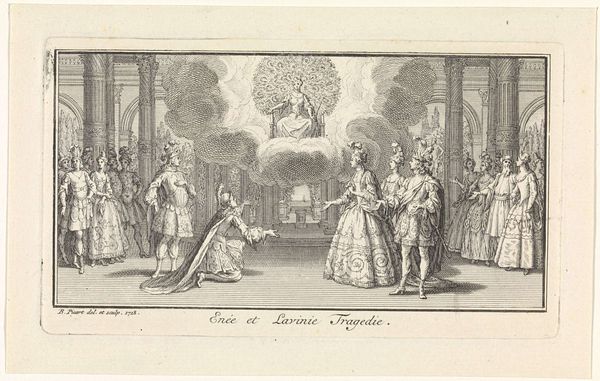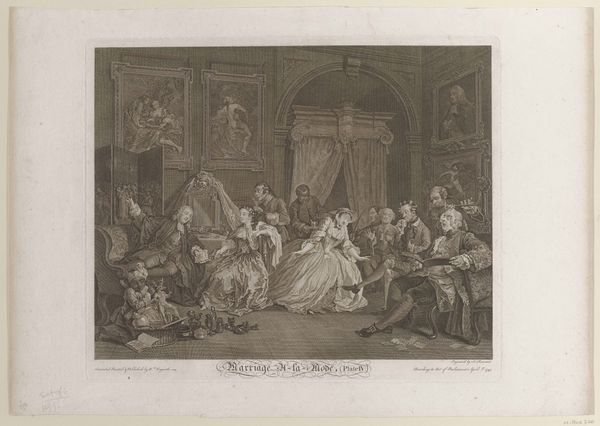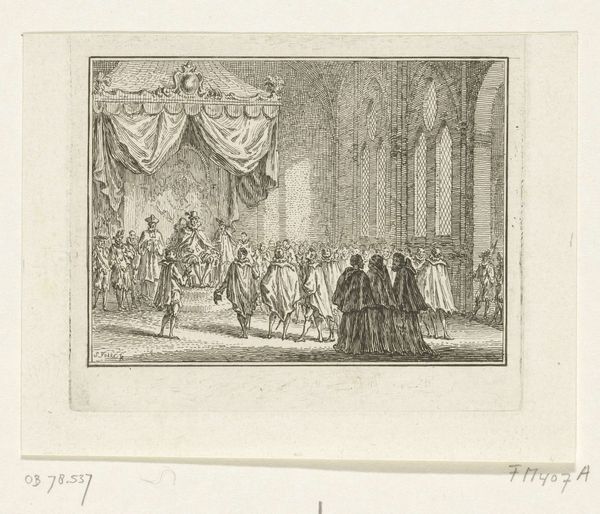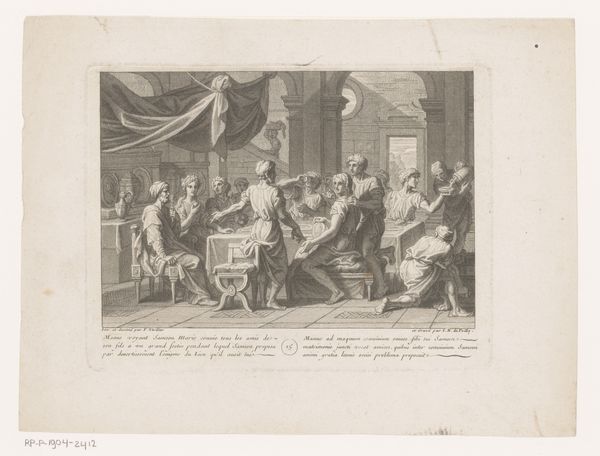
Ceremonie waarin de koninklijke kampvechter een ieder uitdaagt die de wettigheid van verkeizing van de koning betwist, 1689 1689
0:00
0:00
print, engraving
#
narrative-art
#
baroque
# print
#
history-painting
#
engraving
Dimensions: height 153 mm, width 191 mm
Copyright: Rijks Museum: Open Domain
Editor: This engraving, "Ceremonie waarin de koninklijke kampvechter een ieder uitdaagt die de wettigheid van verkeizing van de koning betwist, 1689" by Pieter Pickaert, depicts a royal ceremony, maybe even a challenge. I find the architecture overwhelming, almost oppressive. What’s your interpretation of this work? Curator: Considering this print's material existence, we can view it as a commodity circulating within 17th-century Dutch society. The very act of engraving transforms the depicted ceremony into a reproducible object, democratizing access to royal imagery while simultaneously reinforcing the power structures of the monarchy. Think about the engraver's labor – the skill, the time, and the resources needed to produce this image. Editor: So you’re saying it's not just about the royal figures but about the process of how it was made? Curator: Exactly! Look at the fine lines and details achieved through the engraving process. This labor-intensive method speaks volumes about the value placed on meticulous craftsmanship. This print challenges the hierarchy often imposed between "high art" and "craft." Furthermore, the subject matter is linked to the Dutch political landscape, right? The ceremony likely relates to the political tensions and the ongoing challenges to royal authority at the time. Editor: I never thought of prints as a form of mass production with embedded social messages. Thanks. Curator: Think about who consumed such imagery and for what purposes! Editor: Food for thought. Now I’m considering the economics surrounding printmaking.
Comments
No comments
Be the first to comment and join the conversation on the ultimate creative platform.
